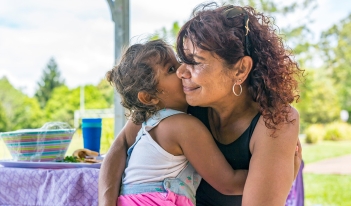Related
-
 Case study 3 Nov 2021
Case study 3 Nov 2021Supporting 'the Response' in Victoria with Common Elements
-
 Case study 9 Nov 2020
Case study 9 Nov 2020Exploring a 'common elements' approach in Victoria
-

CEI is pleased to share a new article authored by members of our team across all geographies in partnership with global collaborators. This new journal article, “Can Common Elements Support a Public Health Approach to Child Maltreatment?” has been published in the International Journal on Child Maltreatment: Research, Policy and Practice. The piece explores how common elements can assist in some of the challenges that arise in the public health response to the maltreatment of children.
The article was authored by CEI’s Dr Melinda Polimeni, Dr Evelyn Tan, Dr Cheryl Seah, Jane Lewis and Arild Bjørndal and Virginia Commonwealth University’s Professor Bryce D. McLeod, Associate Editor, Journal of Clinical Child and Adolescent Psychology (JCCAP).
This article was originally published in the International Journal on Child Maltreatment: Research, Policy and Practice September 09, 2022.
Can Common Elements Support a Public Health Approach to Child Maltreatment?
Across jurisdictions, despite decades of reform in child, youth and family welfare systems, the number of children in contact with statutory child protection services continues to climb. In South Australia, for example, this has been estimated to be as high as 1 in every 4 children.
Currently, the challenge researchers, policymakers, and practitioners face is that the evidence is not always 'implementable'. How can we innovate and build upon the existing evidence to mobilise public health response more significantly to address child maltreatment? Although some evidence-based programs have been found to have a good impact, policy, governance, structure, workforce and service population make it hard to implement them well across complex systems.
One of the approaches that may support effective implementation in complex systems is known as the “common elements” approach. This approach identifies discrete practices or 'elements' that are common across multiple EBPs. It aims to accelerate the uptake of research evidence in practice and empower practitioners, policy makers and funders to adapt evidence-informed approaches to local context and community needs. Several common elements have been identified for preventing and reducing child maltreatment. These include content-focused practices (e.g., facilitating parents' access to social support), process-related practices (e.g., instructional lessons) and sustainability practices (e.g., assisting parents to build social networks). As with EBPs, the success of common elements interventions depends on how well they are implemented. Thus, the factors needed to support the delivery of the intervention must be in consideration.
The identification, application and implementation of common elements is a recent development. There is a small, growing amount of evidence behind the effectiveness of this approach. Although promising, interventions based on common elements should not be seen as substitutes for EBPs – how they are implemented and when they are used should be further explored.
Further research and evaluation efforts should explore the most effective and least restrictive ways that evidence can be mobilized to address child maltreatment. Approaches that draw on common elements alongside tailored implementation strategies offer a promising way forward for achieving the flexibility and adaptability needed to apply evidence in real-world systems in a way that can be scaled and sustained.


